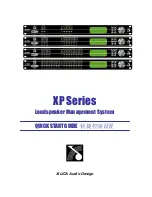
Page 4 of 40
IRIS Connect Series Engineering Manual Version 1.8
2.
IRIS Communication Mechanism (Polling / Alarms)
The polling / alarm mechanism used on the Chiron IRIS system is highly secure and flexible, and uses the IRIS Secure
Apps monitoring software (installed at the monitoring centres) with the IRIS Connect diallers.
It has been independently certified as compliant to the highest level of security available – Grade 4, ATS6 - within the
EN50131 standard for alarm systems.
The IRIS system is unique in its ability for the polling frequency to be varied which means that the polling profile can
be adjusted as necessary to take into account the grade of security required and the traffic bandwidth available.
Key features are:
Independently certified as compliant with EN50131-1 Grade 3 ATS configuration SP6 over Ethernet and ATS –
SP5 over GPRS for single path Ethernet and DP4 for dual path communications.
After initial installation all backup or alternative IP addresses for the Polling engines (main & backup) are
downloaded to the IRIS Connect dialler over the polling communications.
All polling and alarms are authenticated by the receiver (Polling Engine) using the secure and sophisticated
‘Challenge Handshake’ mechanism as used in military and credit card applications. Each remote IRIS dialler
proves its authenticity using a 256 bit security key. A new random number generated by the receiver (Polling
Engine) is used for every poll so it is not possible to substitute the dialler using playback or sequence prediction.
Unlike other systems each dialler can have a unique security key which can be changed at the monitoring centre
any time as required. For additional security the installer never needs to load the key or be aware of what it is.
Also unlike other systems, the polling frequency is not fixed and can be varied by the monitoring centre at any
time, from a period of 10 seconds for high security systems down to once a week for low security systems. This
means that polling rates can be optimised to deliver the grade of service required and minimise the bandwidth
required.
Polling and alarms are carried over the TCP/IP protocol that gives end-to-end error protection. This removes the
possibility with other protocols such as UDP that data packets are lost or re-sequenced in the network leading
to false alarms.
All polling and alarms are outbound from the dialler location to the monitoring centre and do not require the IP
address of the dialler to be known. No special set-up is required at the customer’s router, such as port mapping
for incoming calls. This feature is essential for operation with networks with dynamic addressing and standard
GPRS/3G networks.
Background communication path polling is also configurable at the monitoring centre and enables the IRIS
dialler to periodically poll over the backup communication path, and any faults with this communication will be
reported back to the IRIS Secure Apps system.
Each poll transaction is very small and with the authentication protocol is only about 500 bytes of data,
including all traffic in both directions. For fixed line IP networks there are no traffic costs.
Total traffic is proportional to the polling frequency. For example, at 10 second poll 180K bytes per hour and at 3
minutes polling this would reduce substantially to only 10K bytes per hour.
Even with tariffed networks such as GPRS/3G, and when running at a polling rate suitable for the highest level of
security, a typical cost is only a few Euros per month. For GPRS/3G in many cases the level of traffic falls within the
free bandwidth that comes with the SIM card contract and will effectively be at no cost.





































